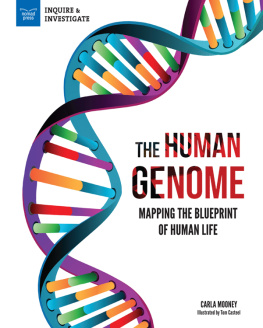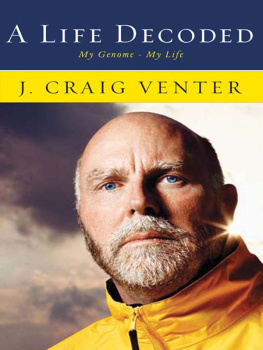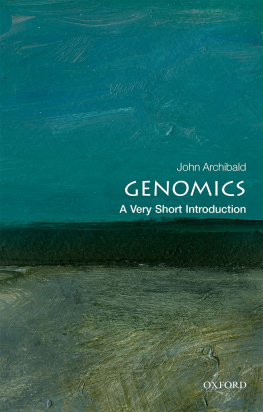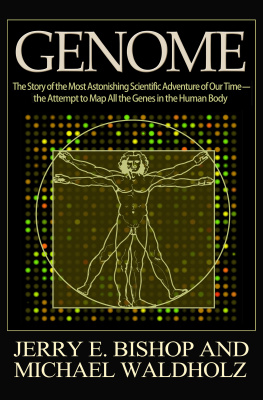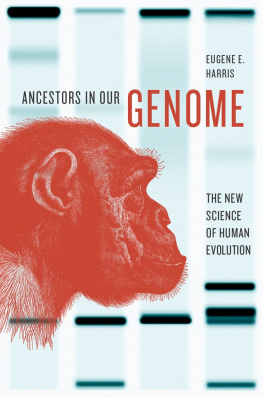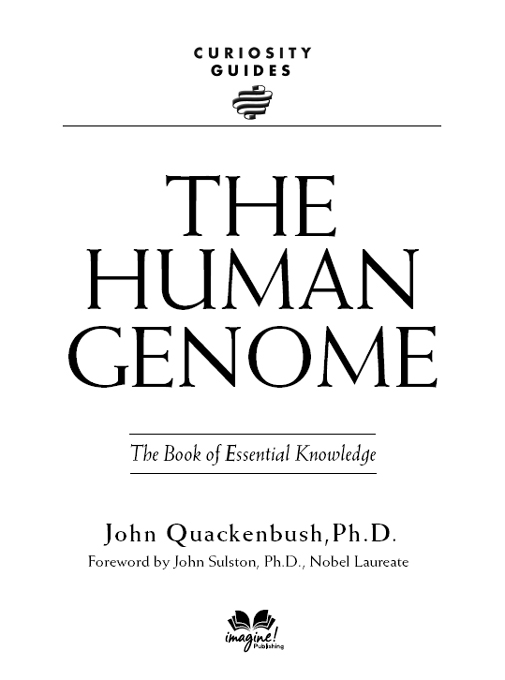I want to thank my wife, Mary Kalamaras, for letting me steal away the hours required to tell the tale of the human genome. As my spouse, Mary gave me the support and encouragement to write this book. As also my editor and most critical reader, she helped me shape my work into something that I hope readers will find both informative and entertaining.
Special thanks go to designer Linda Kosarin, whose talent, hard work, and wonderful creative energy are evident throughout the pages of this book, and whose grace and sense of humor were most appreciated throughout the design process. I am also grateful to Haude Levesque for the diligence and patience she displayed in creating (and re-creating) the illustrations.
Finally, I would like to thank Charlie and Jeremy Nurnberg of Imagine Publishing for their vision of the Curiosity Guides and for their guidance in moving this volume from concept to publication.
F OREWORD
In 1992, a small group of us founded a new organization, the Sanger Centre (now known as the Wellcome Trust Sanger Institute), dedicated to making a start on the sequencing of the human genome. As our institute grew, we, along with other scientists around the world, had the good fortune to work on one of the most exciting scientific projects of our timethe Human Genome Project.
In 2000, sitting in London at the Prime Ministers official residence, I heard Bill Clinton and Tony Blair inform the world that we now had a new map that would help to change the way we view ourselves and how we understand health and disease.
Although a milestone had been achieved, this was in truth a beginning, not an end. The sequence itself was as yet unfinished, but crucially it was in the public domain. This openness allowed finishing to proceed cooperatively, but above all it allowed everyone to access the genome freely for analysis and use.
Since then, this sequence assumes ever greater importance as it is analyzed in depth, as numerous other genomes are sequenced and compared with it, as new gene families are discovered, and as biologists use all this information to grapple with the enormous complexity of the processes of life. Genomics is embedded in and illuminates all of biology, and it is increasingly becoming a part of our everyday lives.
This is what makes The Human Genome by John Quackenbush a timely and important book for anyone interested in learning about the history, science, and social and ethical implications of the Human Genome Project. In these pages you will find a wealth of information, presented in a concise and accessible manner, that provides the necessary foundation for understanding genetics, genomics, and the technological advances that are changing not only the face of medicine, including the diagnosis and treatment of disease, but society as a whole.
Now that we humans have access to our genome sequence, it is imperative that we recognize the tremendous responsibility that goes along with such knowledge and the consequences that can arise from its application. The Human Genome will help you understand how and why genomics is changing the world and what the code of instructions written into every one of our genomes has to say about who we are as individuals and as a species.
J OHN S ULSTON , P H.D .
2002 Nobel Laureate
Chair, Institute for Science, Ethics and Innovation
The University of Manchester
Manchester, U.K.
Former Director, Wellcome Trust Sanger Institute
Hinxton, U.K.
I NTRODUCTION
A Race to the Future
On June 26, 2000, before a gathering of U.S. and international dignitaries in the East Room of the White House, President Bill Clinton held a press conference to announce an astounding scientific milestone. After setting the stage by recalling Lewis and Clarks historic mapping of the American frontier, the President proclaimed the completion of another, very different type of exploratory map: the first survey of the entire genetic makeup, or genome, of the human being, consisting of all the DNA that our cells carry.
Without a doubt, Clinton remarked, this is the most important, most wondrous map ever produced by humankind. British Prime Minister Tony Blair, who had joined the President in the announcement via satellite link, further described the feat as the first great technological triumph of the twenty-first century.
Clinton then spoke about the profound implications of the achievement and the potential for medical advances in the detection, treatment, and possible cure one day of thousands of diseases, including Alzheimers, Parkinsons, diabetes, and a number of cancers. Although genetic analysis had been ongoing for years and yielded many successes, including sophisticated drugs for certain types of leukemia and breast cancer, the mapping of the human genome promised to usher in a revolutionary new era in biology and medicine. Not surprisingly, the scientific community, along with the world at large, greeted Clinton and Blairs announcement with excitement and began imagining a future of seemingly limitless possibilities.


